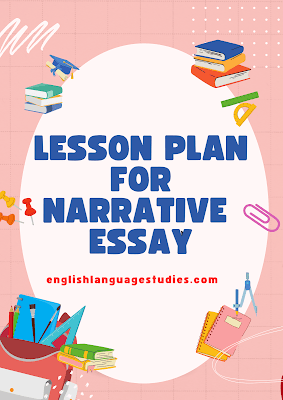Grade Level: 8–12
Duration: 2–3 Class Periods (45–60 minutes each)
Subject: English Language Arts
Focus: Narrative Essay Writing
Objective:
By the end of this lesson, students will be able to:
- Understand the structure and key elements of a narrative essay.
- Brainstorm and outline a personal narrative.
- Write a compelling narrative essay with a clear beginning, middle, and end.
- Use descriptive language and sensory details to engage the reader.
Materials Needed:
- Whiteboard or projector
- Sample narrative essays
- Graphic organizers (for plot structure)
- Narrative Essay Rubric
- Writing notebooks or digital devices
Introduction (10–15 minutes):
Hook:
Ask students: “Have you ever told a story that made someone laugh, cry, or gasp? That’s a narrative in action!”
Brief discussion on why storytelling is powerful and how narrative essays are a structured way to share personal experiences.
Mini-Lecture:
Explain the purpose of narrative writing: to tell a story with a message or meaning. Introduce key elements:
- Characters
- Setting
- Conflict
- Climax
- Resolution
- Theme
Guided Practice (20–30 minutes):
Step 1: Analyze a Sample Narrative Essay
Read a short narrative essay as a class. Discuss:
- What is the central conflict?
- How is the story structured?
- What descriptive language helps bring the story to life?
Step 2: Brainstorming & Planning
Students choose a personal story or experience to write about. Use a graphic organizer to plan:
- Introduction (hook and setting the scene)
- Rising action
- Climax
- Falling action
- Conclusion & reflection
Independent Practice (Homework or Next Class):
Drafting the Narrative Essay
Students write the first draft of their essays, focusing on storytelling, structure, and sensory details. Encourage the use of dialogue and personal voice.
Day 2: Peer Review & Revision
Peer Review Activity:
In pairs, students exchange essays and give feedback using a checklist (e.g., Does the story flow? Is there a clear climax? Are details vivid?).
Revision Time:
Using feedback, students revise their essays for clarity, coherence, and impact.
Assessment:
- Final narrative essay submitted for grading using the Narrative Essay Rubric (criteria: structure, creativity, grammar, descriptive language, and reflection).
- Optional oral storytelling presentations for bonus points or confidence-building.
Extension Ideas:
- Turn essays into illustrated storybooks or comic strips.
- Create audio recordings or podcast-style storytelling.
- Submit narratives to school magazines or writing competitions.
Tips for Teachers:
- Encourage vulnerability and authenticity—narratives are more powerful when they’re honest.
- Provide supportive feedback and celebrate unique voices.
- Use mentor texts from diverse authors to inspire students.
Conclusion:
Narrative essays are more than assignments—they’re opportunities for students to find their voice, reflect on their experiences, and connect with others through storytelling. With the right guidance and a bit of creativity, every student can craft a story worth telling.
Lesson Plan: Nouns for A1 and A2 Levels
Lesson Plan: Pronouns for A1 and A2 Levels
